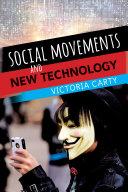Over the course of thirty-seven chapters, including an editorial introduction, this handbook provides a comprehensive examination of scholarly research and knowledge on a variety of aspects of women's collective activism in the United States, tracing both continuities and critical changes over time. Women have played pivotal and far-reaching roles in bringing about significant societal change, and women activists come from an array of different demographics, backgrounds and perspectives, including those that are radical, liberal, and conservative. The chapters in the handbook consider women's activism in the interest of women themselves as well as actions done on behalf of other social groups. The volume is organized into five sections. The first looks at U.S. Women's Social Activism over time, from the women's suffrage movement to the ERA, radical feminism, third-wave feminism, intersectional feminism and global feminism. Part two looks at issues that mobilize women, including workplace discrimination, reproductive rights, health, gender identity and sexuality, violence against women, welfare and employment, globalization, immigration and anti-feminist and pro-life causes. Part three looks at strategies, including movement emergence and resource mobilization, consciousness raising, and traditional and social media. Part four explores targets and tactics, including legislative forums, electoral politics, legal activism, the marketplace, the military, and religious and educational institutions. Finally, part five looks at women's participation within other movements, including the civil rights movement, the environmental movement, labor unions, LGBTQ movement, Latino activism, conservative groups, and the white supremacist movement.
The chapters in the handbook consider women's activism in the interest of women themselves as well as actions done on behalf of other social groups. The volume is organized into five sections.










